Key takeaways:
- Effective test environment management is crucial to align staging with production, reduce bugs, and enhance collaboration.
- Establishing clear testing objectives boosts team morale and ensures alignment with overall business goals.
- Implementing standardization and automation in environment setup significantly improves efficiency and reduces troubleshooting time.
- Continuous improvement through feedback, performance metrics, and peer reviews fosters a culture of quality and collaboration.

Understanding Test Environments
Understanding test environments is crucial for any testing process. I remember my first experience setting up a test environment; it felt like navigating a maze with no map. What I’ve learned is that each environment—whether it’s development, staging, or production—serves a unique purpose and must mirror real-world conditions as closely as possible to yield accurate results.
Have you ever encountered a bug that only appears in the test environment? This can be frustrating, especially when your team has put in so much effort. A well-structured test environment helps mitigate this, allowing you to identify discrepancies that could lead to failures down the line.
Moreover, the emotional ups and downs tied to testing can often stem from environment issues. I’ve felt the weight of urgency when deadlines loom, and everything seems to hinge on a well-functioning test environment. It’s essential to create a stable and reliable testing landscape to ease that pressure and foster confidence among team members.
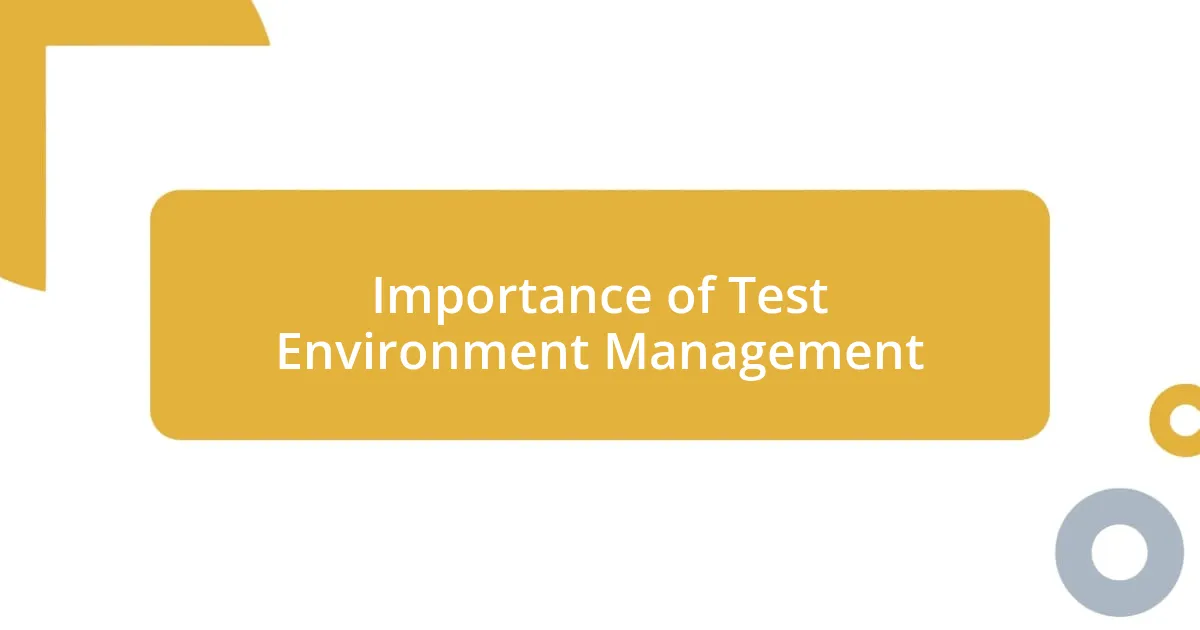
Importance of Test Environment Management
Test environment management plays a pivotal role in ensuring the quality and reliability of your software. I vividly recall a time when poor management led to discrepancies between our staging and production environments. We were left scratching our heads, trying to understand why everything worked flawlessly in one but failed spectacularly in the other. That experience taught me that aligning test environments with production is not just a best practice—it’s a necessity to prevent future frustrations.
Another important aspect is the ability to replicate issues. There’s nothing more disheartening than finding a bug in production only to discover that you can’t reproduce it in your test environment. I’ve been there, and it often feels like trying to catch smoke with your bare hands. A properly managed test environment allows for consistent and repeatable testing, which ultimately leads to quicker fixes and enhanced product quality.
Moreover, maintaining an organized test environment fosters collaboration across teams. I remember when our testing teams and developers started sharing insights about their setups. This collaboration not only improved our workflows but also created a shared sense of ownership over the product. A well-managed test environment encourages communication, resulting in fewer misunderstandings and a more cohesive team approach.
| Aspect | Importance |
|---|---|
| Quality Assurance | Reduces the likelihood of errors slipping into production. |
| Issue Replication | Enables consistent reproduction of bugs for effective troubleshooting. |
| Team Collaboration | Encourages better communication and understanding among team members. |
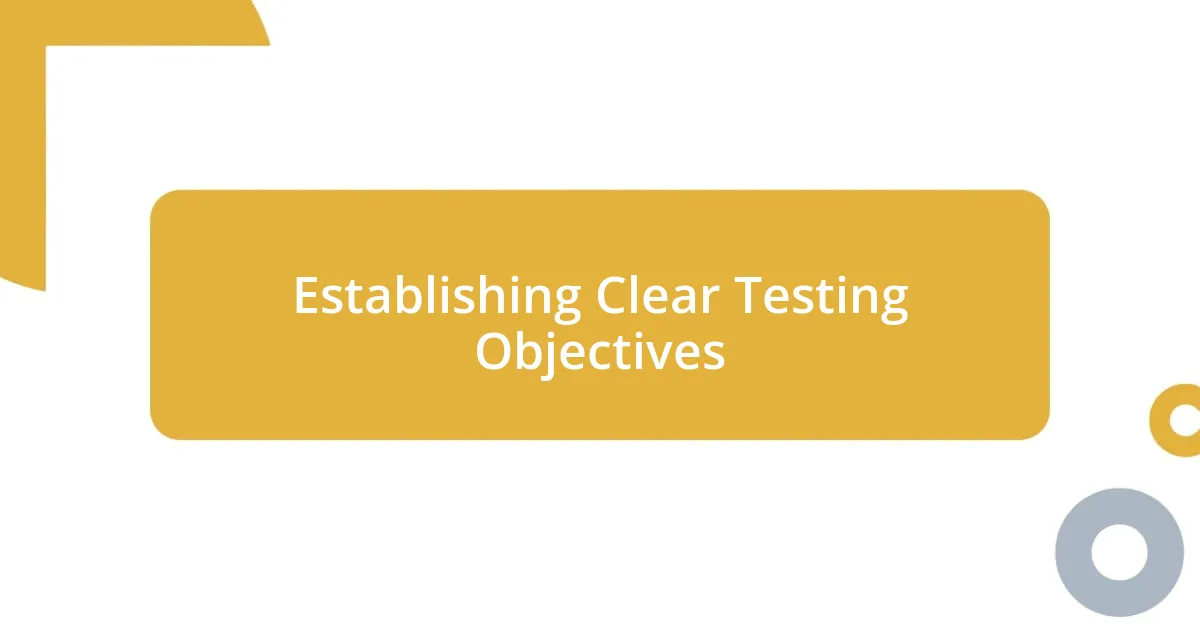
Establishing Clear Testing Objectives
Setting clear testing objectives is fundamental to guiding any testing effort effectively. From my experience, objectives act as a compass for the testing team, directing focus and minimizing confusion. I once worked with a team that had vague goals; we stumbled through testing phases, often missing crucial errors simply because we didn’t know what to prioritize. Having clear objectives not only clarifies our direction but also boosts team morale—everyone knows what success looks like.
To establish solid objectives, consider these key points:
- Define Success Metrics: Identify what success looks like before you start testing. This could include specific performance benchmarks or quality standards to hit.
- Involve the Team: Engaging your testing professionals in the objective-setting process ensures buy-in and understanding.
- Align with Business Goals: Your objectives should mirror higher-level business goals to ensure you’re contributing to the organization’s overall success.
When I reflect on my past projects, the importance of alignment becomes strikingly clear. I remember a time when we aimed to enhance user experience for a software rollout. By setting objectives aimed at reducing load times and improving usability ratings, we not only achieved our targets but also received glowing feedback from the end users. Ensuring that everyone is on the same page is essential for fostering a sense of accomplishment and dedication within the team.
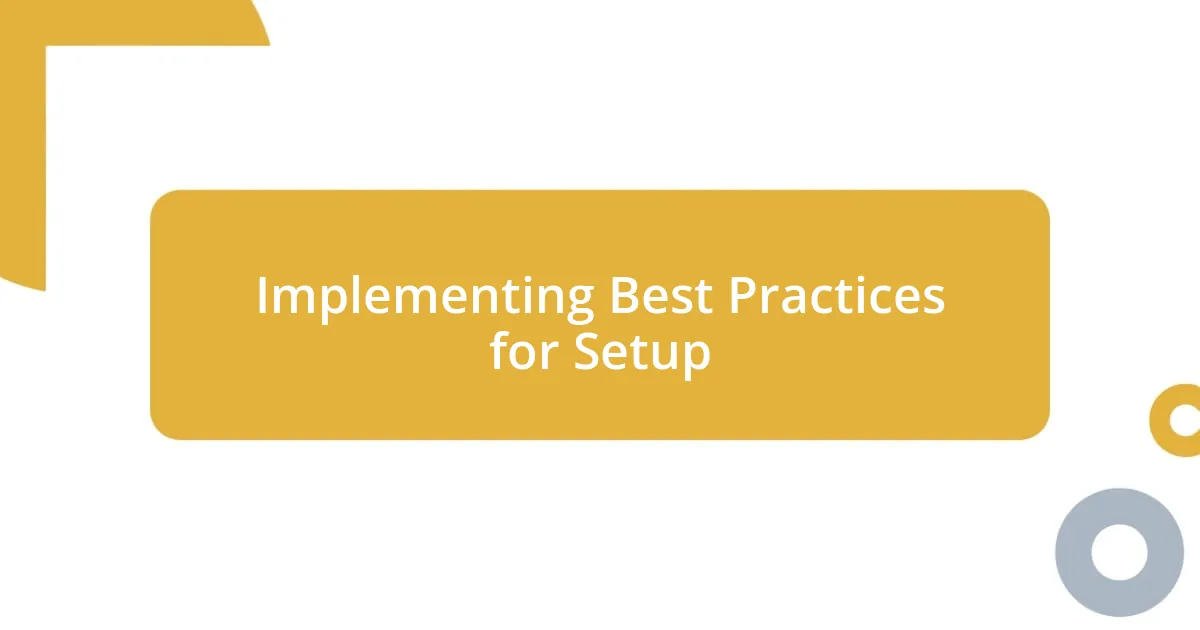
Implementing Best Practices for Setup
Implementing best practices for setup requires a meticulous approach, and I’ve found that standardization is key. When I standardized the configurations used across different environments, it was like flipping a switch. Suddenly, we reduced the time spent troubleshooting inconsistencies immensely. It’s surprising how much time you can save by having a clear, repeatable setup process—less confusion means more focus on what really matters: delivering quality software.
Configuration management tools can also make a significant impact. I remember when my team adopted a tool that automated setup processes. Initially, I was uncertain about the change, fearing it would complicate things. However, it turned out to be a game-changer! Automation ensured that our test environments were set up consistently and quickly, allowing us to focus on testing rather than wrestling with the environment setup. Have you ever considered how much manual effort you invest in setting up environments? Automating those processes can really free up your time and energy for more crucial tasks.
Lastly, don’t underestimate the value of documentation. Early in my career, I often overlooked this aspect, thinking it was tedious. But when I started documenting our setup processes and configurations, I witnessed a remarkable shift in team efficiency. Good documentation helps onboard new team members and serves as a reference when troubleshooting. I can’t tell you how many times I’ve felt a wave of relief knowing I could quickly refer to our documentation during crunch time. What systems do you have in place for documenting your setups? Embracing a culture of thorough documentation could elevate your testing procedures to the next level.
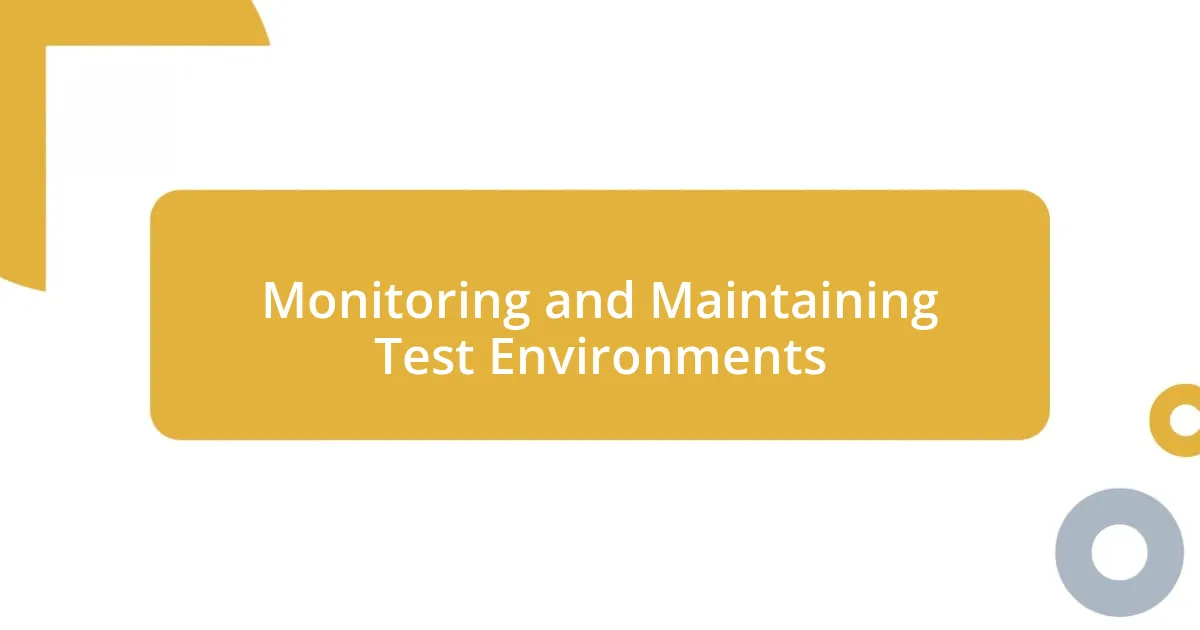
Monitoring and Maintaining Test Environments
Monitoring test environments is like keeping a pulse on your project’s health. From my experience, regularly checking resource utilization can prevent unexpected bottlenecks. During one project, I noticed increased memory consumption in our test environment. By proactively monitoring, we swiftly scaled up our resources, avoiding delays that could have impacted our timelines. Have you ever faced a slowdown in testing due to unforeseen resource issues? It’s frustrating, but with consistent monitoring, you can mitigate those risks early.
Maintenance is equally crucial in ensuring robust test environments. I recall a situation where outdated software in the testing environment led to inconsistent results. I implemented a schedule for regular updates and maintenance checks. This practice not only improved stability but also reliably reflected the production environment. It’s remarkable how maintaining currency with tools can streamline testing processes and enhance accuracy. How often do you prioritize maintenance alongside project deadlines? Making that a focus can truly pay dividends in productivity.
Finally, don’t underestimate the power of collaboration during monitoring. Engaging your team in these discussions can unveil insights you might overlook. When I gathered my team to share monitoring results, we brainstormed solutions that radically improved our testing workflow. It reminded me that even small changes, enhanced through collaboration, can yield significant benefits. What collaborative practices do you have in place for optimizing your test environments? Embracing team contributions can turn a good system into a great one.
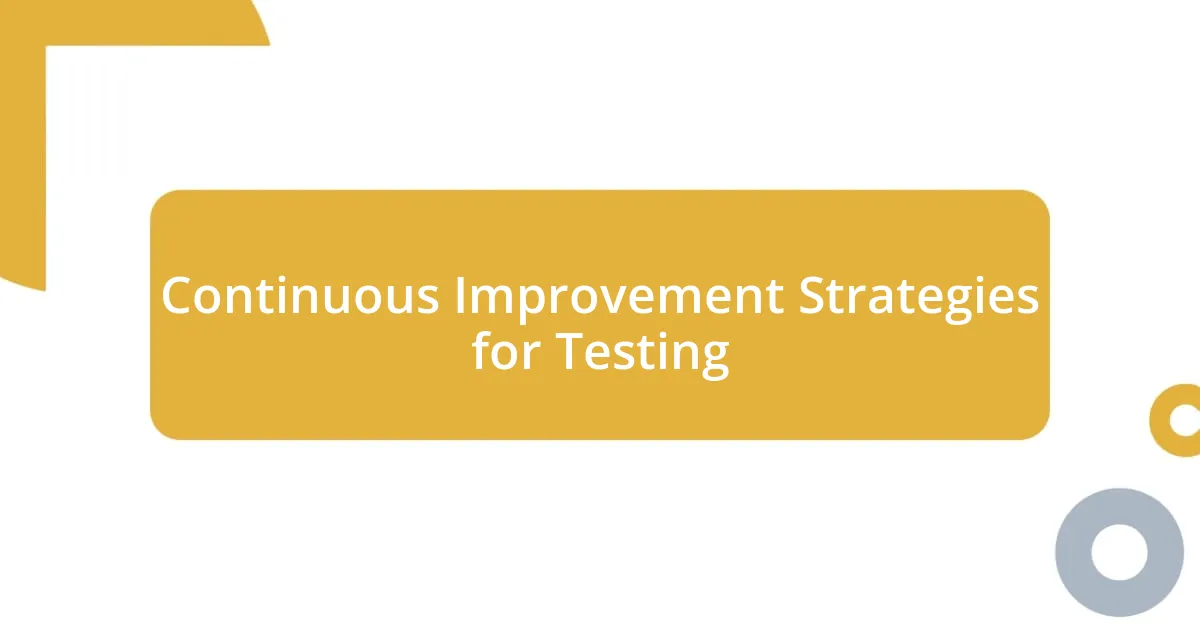
Continuous Improvement Strategies for Testing
Continuous improvement in testing is a journey fueled by feedback and adaptation. I recall a project where we held retrospectives after each testing cycle. The insights shared by my team were eye-opening; I learned that small tweaks, like adjusting our test case prioritization, could drastically enhance efficiency. Have you ever thought about what your team could achieve if you tapped into their experiences after each round of testing? This practice not only fostered a culture of continuous improvement but also kept everyone engaged and motivated.
Another strategy I find indispensable is benchmarking performance metrics. For example, I once set up a dashboard to track various indicators such as test execution times and defect leakage rates. Seeing those numbers in real time was both invigorating and intimidating. It really drove home the importance of setting tangible goals and being accountable. I’d often ask myself, “What could we do better today than yesterday?” This constant inquiry led us to achieve remarkable improvements over time. How do you currently measure your team’s performance in testing? Embracing metrics as a tool for improvement can create a clear path forward.
Lastly, I’ve found that incorporating peer reviews into the testing process can elevate quality in unexpected ways. I vividly remember a time when a colleague caught a crucial error during a review that I had completely overlooked. That moment highlighted for me how collaborative scrutiny could surface insights that even the best solo efforts might miss. Have you considered how peer feedback could enhance your testing practices? Establishing a routine for peer reviews not only bolsters quality but also strengthens team relationships. It’s a win-win that fosters both personal and professional growth.














